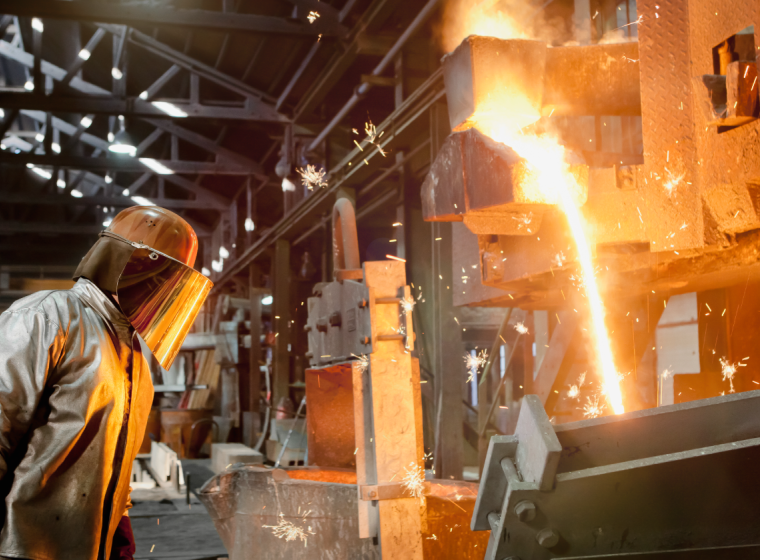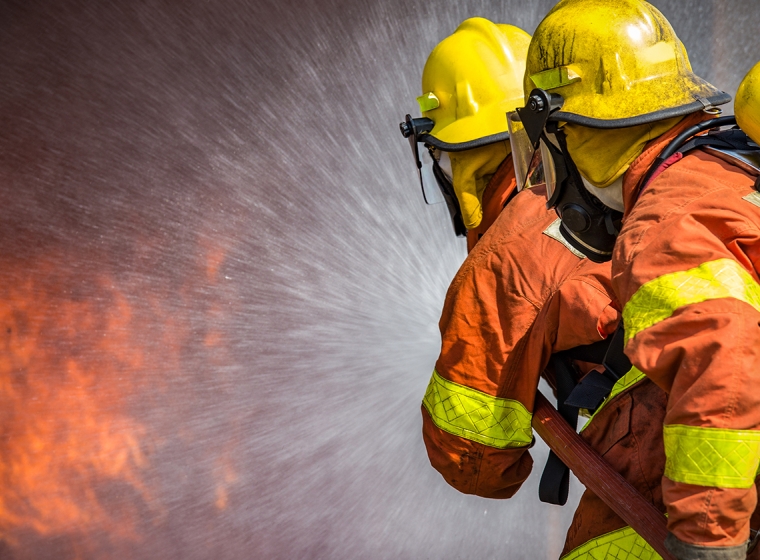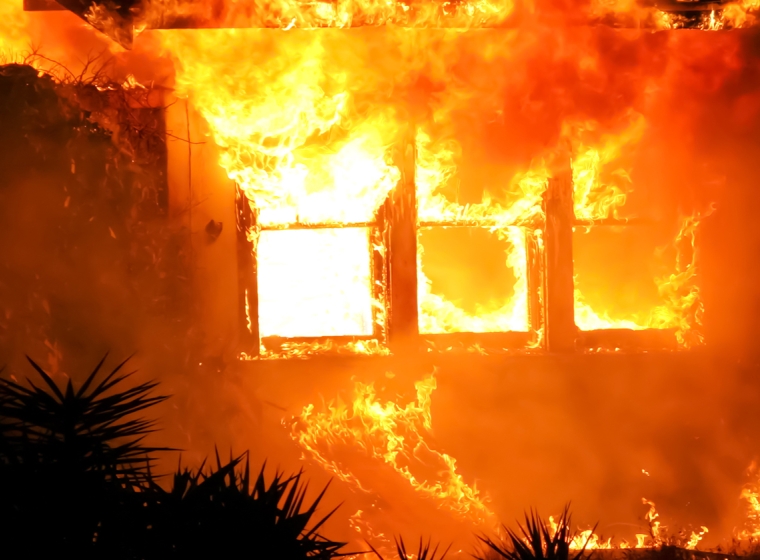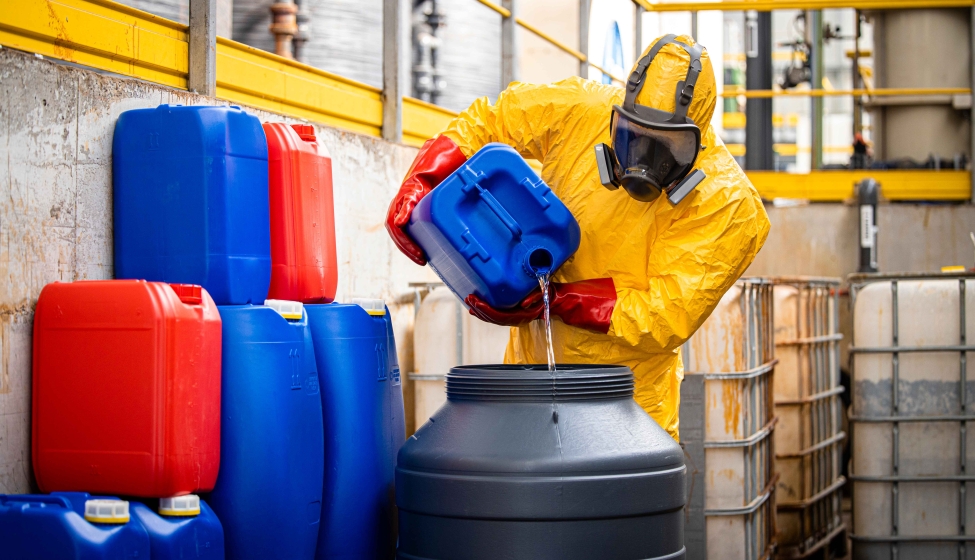April 19, 2024
Codes, standards, and practical implementation for protecting workers and facilities
Every day, U.S. fire departments respond to approximately nine fires involving the ignition of flammable and combustible liquids and gases in industrial and manufacturing facilities. These fires in total account for approximately 120 civilian injuries and deaths and upward of $260 million in property damage annually.
This year's National Burn Awareness Week focused on the prevention of flammable liquid burn injuries. Additionally, the National Fire Protection Association (NFPA) Research Foundation released data on fires in warehouse-type structures spanning 2016-2020 showing the high risk of danger of fires related to flammable and combustible liquid. While the data indicated flammable and combustible liquids or gases were the first fuel ignited in just 6% of all fires, they were responsible for one-third of all recorded burn injuries.
Protecting personnel that work in hazardous facilities, such as those that handle and store flammable and combustible liquids or where flammable vapors are expected, requires accounting for a variety of NFPA standards. It also requires knowing how to assess risks and hazards specific to each industrial setting — and implementing appropriate mitigation strategies to protect workers and infrastructure.
At the highest level, a strong approach to mitigating the risks of flammable and combustible liquids includes accounting for:
- The codes and standards used to classify and regulate the use, storage, and other safety requirements of hazardous liquids in facilities;
- The fire protection systems used to contain or suppress flammable and combustible liquid fires; and
- Safety measures and best practices to reduce fire hazards associated with handling flammable and combustible liquids.
Codes and standards
The Occupational Safety and Health Administration implements and enforces regulations based on standards developed by organizations such as NFPA. As with all standards, which are developed for broad adaptation by a variety of entities and use cases, understanding the intention of a standard can be essential to compliance. NFPA, FM Global, and the Department of Transportation (DOT) each classify the flammability of liquids differently which affects the transportation, handling, and storage requirements of these liquids. FM Global has moved away from the term "combustible" and uses the term "ignitable" when classifying the flammability of liquids.
NFPA 30, the Flammable and Combustible Liquids Code, is a standardized document, enforceable under OSHA, used to classify and safeguard processes related to the storage, handling, and use of flammable and combustible liquids. NFPA 30 provides key frameworks for facilities that work with flammable and combustible liquids, including:
- Classification of liquids and liquid properties used to establish fire hazards
- Fire and explosion protection measures
- Storage requirements for different liquid classifications and spaces
- Maximum allowable quantities for different handling and storage spaces
Exponent's engineers have expertise in this space through our work as special expert technical committee members for various NFPA codes and standards, meaning we have direct experience authoring and interpreting these codes, as well as applying them to a myriad of industrial settings.
In a fire involving a flammable or combustible liquid, the first fuel ignited is not the liquid fuel but rather the flammable vapors of that liquid. Ignition of flammable vapors occurs when they are mixed with an oxidizer (typically air) in concentrations sufficient to burn. These fires often take place in the presence of an ignition source like a flame, spark, or other source of heat. The lower flammability limit (LEL) of liquid fuels is a quantity used to characterize the minimum concentration of fuel vapors in the air required for ignition and can also be linked to the flashpoint of the fuel.
It is important for facility operators to understand the properties that characterize the fire hazard of flammable and combustible liquids as well as the mechanism by which these liquids ignite to ensure safety measures are in place to protect employees and infrastructure; however, visualizing the shape and impacts of a fire before it happens to define the right safety measures is challenging. Tools like computational fluid dynamics (CFD) modeling can be key to establishing a clear picture of what's at stake for a facility — the conditions, space, potential availability of oxidizers, proximity of workers, equipment, etc. — and which safety measures should be prioritized.
"Extinguishing a flammable or combustible liquid fire using water-based fire suppression systems can potentially cause a fire to spread."
Fire protection systems
NFPA 30 lists several codes related to fire suppression and extinguishing systems used to protect spaces that handle and store flammable and combustible liquids, such as NFPA 11 (Standard on Low-, Medium-, and High-Expansion Foam) and NFPA 17 (Standard for Dry Chemical Systems).
In residential buildings, water-based fire protection systems designed according NFPA 13R (Standard for the Installation of Sprinkler Systems in Low-Rise Residential Occupancies) are generally effective in controlling fires, but extinguishing a flammable or combustible liquid fire using water-based fire suppression systems can potentially cause a fire to spread, inadvertently resulting in additional electrical hazards for first responders. Suppression options in facilities that process and store flammable and combustible liquids can include:
- Foam-based suppression systems (NFPA 11) can be used to suppress flammable and combustible liquid fires. When discharged, the expansion foam smothers the fire by forming a non-penetrable layer between the liquid and the air in the incident space. Foam-based systems are used in spaces where re-ignition is a possibility and where the discharge of water can result in equipment losses, such as in aircraft hangers.
- Dry chemical suppression systems (NFPA 17) are known to suppress flammable and combustible liquid fires using chemicals such as mono-ammonium phosphate, which is an all-purpose (ABC) chemical that can be used to suppress ordinary combustible, flammable liquid, and electrical fires. An ABC chemical smothers, cools, shields radiation, or breaks chain reactions in the flame. These systems are used when a water-based fire suppression system is impractical but a single-fire suppression system is necessary, e.g., when an adequate water supply is not readily available or for areas where multiple types of combustible materials are handled and stored.
Importantly, the appropriate design, installation, inspection, testing, and maintenance of these systems are critical to their effectiveness in the event of a fire. System deficiencies and impairments can result in fire damage and burn injuries. Facility owners and operators can gain indispensable insights through both initial and routine preventative audits of fire protection systems, as well as forensic audits of systems after a fire to determine what failures may have caused damages or injuries.
Personnel and equipment protection
One of the main fire hazards for employees working in areas that handle and store flammable and combustible liquids is the unintentional release of flammable vapors that can accumulate in sufficient quantities to ignite, resulting in a flash fire or explosion. A flash fire is a short-duration, high-energy-flux event that can cause severe burn injuries to employees when not adequately protected.
Personal protective equipment (PPE) is commonly used to protect personnel who handle and use flammable and combustible liquids. Antistatic PPE can be used to reduce the chance of igniting fuel vapors via an electrostatic discharge. NFPA 77 (Recommended Practice on Static Electricity) describes practices to reduce and prevent the accumulation of static charge, including bonding and grounding practices, wearing anti-static clothing, and installing static-dissipative flooring and shoes.
The severity of thermal injuries sustained by personnel during flammable and combustible liquid fires may be reduced using fire-resistant PPE manufactured according to the requirements listed in NFPA 2112 (Standard on the Flame-Resistant Protection of Industrial Personnel Against Short-Duration Thermal Exposure from Fire). However, to thoroughly understand the interaction of PPE with certain types of flammable and combustible liquids, vapors, and ignition sources and make informed choices for a certain facility, cutting-edge, experimental testing facilities like those available at Exponent can be used to characterize the burning behavior of specific textiles.
NFPA 33 (Standard for Spray Applications using Flammable or Combustible Liquids) and NFPA 70 (National Electrical Code) also provide information about the use of equipment that will ensure proper ventilation and minimize the ignition risk of flammable and combustible liquids via an electrical fault.
Improving workplace safety
Fires involving flammable and combustible liquid fires and explosions are complex events. To ensure that life and property are protected, a myriad of codes, standards, and fire suppression measures must be jointly considered and implemented to ensure that the hazards associated with the use, handling, and storage of flammable and combustible liquids are adequately mitigated.

Tired of Occupational Injuries?
What Can We Help You Solve?
Exponent's fire and explosion experts apply their extensive knowledge to evaluate the performance of fire protection systems used in facilities that store, handle, and use flammable and combustible liquids. Many of our staff are licensed fire protection engineers and certified fire and explosion investigators who actively participate in the NFPA 30 code development process.

Fire & Flammability Testing
Thorough fire and flammability testing for sprinklers, smoke, and heat detectors, vehicle fire testing, and more.

Fire Protection Engineering
Extensive fire suppression, detection, and alarm system testing to support achieving code and regulatory requirements.

Fire & Explosion Investigations
In-depth field examinations and high-tech modeling and testing to determine the origin and cause of fires, gas explosions, dust explosions, and other explosions...

Occupational Health & Safety Compliance
Evaluate potential exposures to chemical, biological, and physical hazards in the workplace with on-site assessments.

Biomechanical Injury Investigations & Analysis
Skilled biomechanical analysis to help determine the cause of specific injuries and communicate results in a relevant and clear context.




